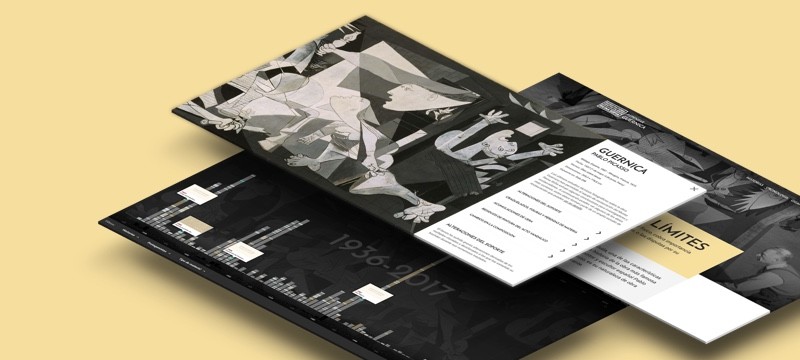Picasso Between the Wars, 1919-1939, Museum of Modern Art, Nueva York, 1952
On 6 August 1952 the Museum of Modern Art (MoMA), New York, announced the opening of two exhibitions: Works of Art from the Museum Collection and Picasso Between the Wars, 1919–1939, and although both were organised by the museum’s curator, Dorothy Miller, the difference between the two was striking. The first featured Picasso works such as Oval Still-Life, Ma Jolie, Les Demoiselles d'Avignon and Three Musicians, and others, inside a large ensemble of pieces by the European avant-garde, predominantly Cubist and Futurist, and works by six American artists including Georgia O´Keeffe, Ben Shahn and Edward Hopper. In the second the focal point was Guernica, installed on the third floor and, as with half the works that made up the show, it was loaned to the museum by the artist.
These two exhibitions from 1952 epitomised an exhibition programme model based on an economy of resources and an exercise in constantly placing value and context on the museum’s collections, thus acknowledging the role of its acquisitions and donations in erecting its museum narrative. With respect to Picasso Between the Wars, 1919–1939, and without forgetting the importance of Guernica (1937) to the exhibition title and the place MoMA set aside for it, the other focal point was Night Fishing at Antibes (1939), a painting the museum had only recently purchased. Therefore, the show featured two great works — in size and relevance — in relation to the artist’s political involvement and his work’s ties, from allegory and metaphor, to the (pre-)war context of which it was part. The exhibition, barely lasting five weeks, spanned sixteen works, half belonging to the museum and the other half to Picasso. As the exhibition press release stated, visitors — now on a different occasion and with a sharper focus — had the chance to see the variety and scope of the artist’s work from the 1920s and 1930s, precisely the period the museum surveyed in the exhibition on the third floor, and to reach the end of the exhibit having seen two of the artist’s most monumental works to date.
Just past the halfway point of the 20th century, the artistic milieu was shaped by debates around abstract painting and, from Abstract Expressionism to Figurative Abstraction and the painting of fields of colour, it called into question aspects such as the value of the image, representation and emotion. MoMA would periodically survey and consider the European avant-garde, localizing in it the seeds of modernity which took root in American art around 1939.
The exhibition on Picasso formed part of these strategies: on one side, it re-acknowledged the great artist, whose work had spanned the first half of the century and who, together with Matisse, the subject of a major retrospective at MoMA that same year, had eroded the principles of pictorial representation, whilst zooming in on the role of the museum as the custodian of paintings with such relevance to the history of art and to Western history and culture. It was also the year the museum organised an exhibition which toured different American cities bearing the title Studies for Guernica, until 1956, displaying the preparatory drawings which sat beside a reproduction of the canvas. Consequently, its pedagogical approach duplicated and amplified, inside and outside the museum, the dissemination and knowledge of the artist’s work.




